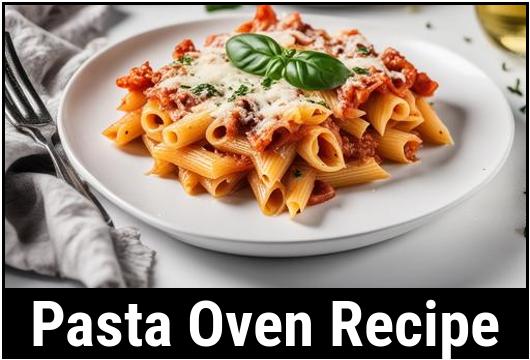
Mastering The Art Of Pasta Cookery: Unleash The Potential Of Your Pasta Oven Recipe
Pasta, the beloved staple of Italian cuisine, has an uncanny ability to please even the most discerning palates. While the perfect pasta dish is often associated with a carefully crafted sauce, let us not forget the importance of properly cooking the noodles themselves. In this extensive guide, we will delve into the intricate world of pasta oven recipes. From unraveling the food science behind pasta cookery to providing insightful tips on selection, cleaning, preparation, and doneness checks, we promise to equip you with the knowledge needed to elevate your culinary creations to new heights.
The Science Behind Perfectly Cooked Pasta
The first step to becoming a pasta oven maestro is to understand the science behind achieving perfectly cooked noodles. Pasta is made from durum wheat, which contains gluten, a protein responsible for the dough’s elasticity. As heat is applied during the cooking process, the proteins in the pasta denature, forming a stable structure. Simultaneously, the starch granules absorb water, resulting in a softer texture. It is crucial to strike the right balance between these two processes to avoid undercooked or overcooked pasta.
Selecting the Perfect Pasta
When it comes to selecting the ideal pasta for your oven recipe, the options seem endless. From the classic spaghetti and penne to the more unique gemelli and fusilli, each shape brings a unique set of characteristics to the table. Consider the desired sauce or accompaniments before making your selection. Long and thin noodles, such as angel hair, pair perfectly with lighter, oil-based sauces, while sturdier shapes like rigatoni hold up well with rich, hearty sauces.
Cleaning and Preparing Your Pasta Oven
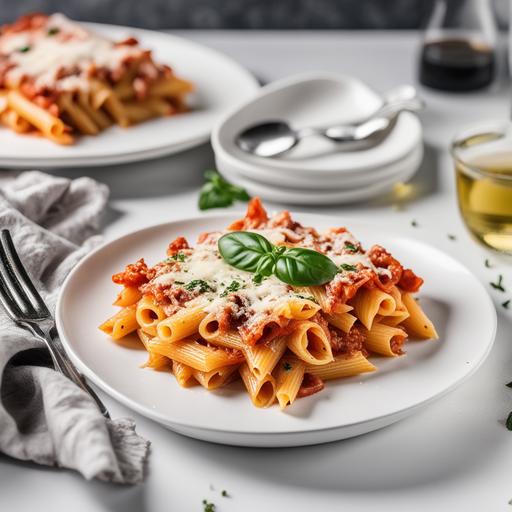
Maintaining a clean and well-functioning pasta oven ensures consistent results and enhances the longevity of your cooking equipment. Begin by carefully removing any debris or leftover food particles from the oven’s interior. Utilize a gentle, non-abrasive cleaner that is suitable for your specific oven material, be it stainless steel or cast iron. Once the oven is thoroughly cleaned, dry it completely and season it with a light coat of cooking oil to prevent rusting or sticking.
Preparing for Pasta Perfection
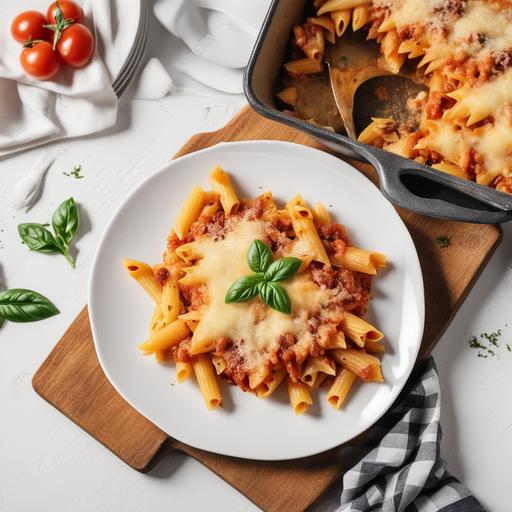
Preparation plays a crucial role in achieving an impeccable pasta dish. Before diving into the cooking process, bring a large pot of liberally salted water to a rolling boil. The rule of thumb is to use one gallon of water per pound of pasta. This ample amount of water ensures that the noodles have ample space to move and cook uniformly. While waiting for the water to reach the desired temperature, gather all necessary ingredients and prep your sauce or toppings.
Timely Tips for Pasta Oven Prowess
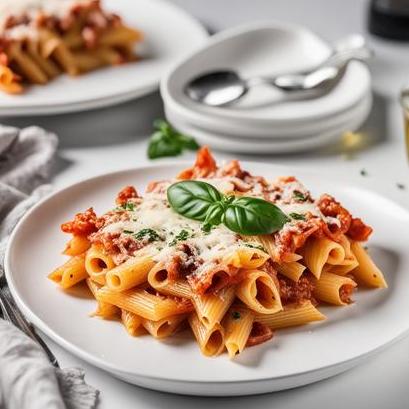
Cooking pasta to absolute perfection requires enchanting wizardry. From techniques passed down through generations to trade secrets revealed by renowned chefs, here are some invaluable tips that will set you on the path to pasta perfection:
-
Oil in the Water Trick: Adding a light drizzle of olive oil to the boiling water can help prevent pasta from sticking together, especially when using long noodles.
-
The Art of Al Dente: To achieve the desired al dente texture, follow the cooking time indicated on the pasta package but taste test the noodles a minute or two before the recommended time. The pasta should offer slight resistance when bitten but not be excessively firm in the center.
-
Reserve Cooking Water: Before draining the cooked pasta, remember to save a cup of the starchy pasta cooking water. This liquid gold can be incorporated into your sauce to enhance its consistency or used to revive slightly dried-out leftovers.
-
Ice Bath for Cold Pasta: When preparing pasta salads or cold dishes, shock the cooked pasta in an ice bath immediately after draining. This halts the cooking process, prevents overcooking, and locks in the pasta’s ideal texture.
Variations and Flavors: Amping Up Your Pasta Oven Creations
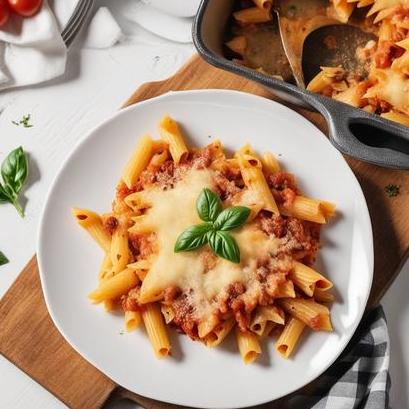
Now that we have established the fundamentals of pasta oven cookery, it’s time to unleash your creativity and explore the vast array of variations and flavors. Whether you are catering to dietary restrictions or simply indulging in culinary experimentation, the following ideas will take your pasta game to new heights:
-
Gluten-Free Alternatives: For those following a gluten-free diet, numerous pasta brands offer delicious options made from quinoa, lentils, or brown rice. Experiment with these innovative alternatives to cater to various dietary preferences.
-
Infused Pastas: Elevate your classic pasta dish with infused noodles. These often come in herb or vegetable flavors, adding vibrant hues and exciting taste profiles to your dish. Think spinach, beet, or squid ink-infused pasta for an eye-catching twist.
-
Flavorful Sauces: While the pasta itself takes center stage, the sauce can make or break the dish. Venture beyond traditional tomato and cream-based sauces and explore the endless possibilities of pesto, marinara with sundried tomatoes, or brown butter sage.
-
Show-Stopping Toppings: Put a delightful spin on your pasta by adding creative toppings. Try toasted breadcrumbs for a delightful crunch, caramelized onions for a touch of sweetness, or crispy bacon bits for an indulgent treat.
Delving Into Doneness: Perfecting Pasta Oven Cookery
Determining the doneness of your pasta without relying on a countdown timer can be a daunting task. Fear not! Follow these simple guidelines to masterfully gauge your noodles’ readiness:
-
The Bite Test: As mentioned earlier, the best way to ascertain pasta doneness is by conducting the famous "bite test." After following the recommended cooking time, take a noodle and taste it. It should be firm but not crunchy in the middle.
-
Color and Transparency: Observe the pasta’s color and transparency. Undercooked pasta will have a stark white interior, while perfectly cooked noodles will display a uniform translucency throughout.
-
Float Like a Butterfly: In most cases, pasta floats to the surface of the boiling water when it is nearly done. This provides a visual cue to start checking for doneness.
The Alluring Pasta Oven Recipe: An Italian Classic
To conclude our comprehensive guide, let us indulge in the timeless and delectable recipe for a classic pasta oven dish – Spaghetti Aglio e Olio. This simple yet flavorful preparation showcases the art of perfectly cooked pasta harmonizing with minimalistic but impressive ingredients.
Ingredients:
-
1 pound of spaghetti
-
1/2 cup extra virgin olive oil
-
6 garlic cloves, thinly sliced
-
1 teaspoon red pepper flakes
-
1/2 cup fresh parsley leaves, chopped
-
Salt, to taste
-
Parmesan cheese, grated (for serving)
Instructions:
-
Cook the spaghetti in a large pot of liberally salted boiling water until al dente. Reserve 1/2 cup of cooking water, then drain the pasta.
-
In a large skillet, heat the olive oil over medium heat. Add the garlic and red pepper flakes, stirring constantly until the garlic turns golden brown and becomes fragrant.
-
Add the cooked pasta to the skillet, along with a splash of reserved cooking water. Toss everything together to coat the pasta evenly with the infused oil.
-
Stir in the chopped parsley and add salt to taste.
-
Serve the spaghetti aglio e olio in bowls, garnished with a sprinkle of grated Parmesan cheese.
Feel free to customize this recipe by adding sautéed vegetables, shrimp, or grilled chicken to enhance the flavors according to your preferences.
Avoiding Kitchen Catastrophes: Preventing Overcooked or Undercooked Pasta
The journey to pasta perfection wouldn’t be complete without addressing the potential pitfalls of overcooked and undercooked pasta. Here’s how to steer clear of these culinary disasters:
-
Overcooked Pasta: Overcooking pasta leads to a mushy consistency and an unappetizing taste. Keep a vigilant eye on the cooking time and frequently taste-test the pasta until it reaches the desired al dente texture.
-
Undercooked Pasta: Undercooked pasta is notorious for its hard, chewy texture. Ensure you bring the water to a rolling boil before adding the noodles, and follow the cooking time instructions provided on the package as a starting point for taste-testing.
In Conclusion: Relish the Journey of Pasta Oven Mastery
With a newfound understanding of the art and science of pasta oven recipes, you are ready to embrace the culinary adventure that awaits. From selecting the perfect pasta shape and ingredients to mastering doneness checks and infusing your dishes with innovative flavors, experimentation and creativity are the cornerstones of exceptional pasta cookery. Remember, the journey is as important as the destination, so relish every moment spent in the kitchen, and savor the incomparable pleasure that a well-executed pasta dish brings to the table. Buon appetito!
Sources
FAQS On Pasta Oven Recipe
What Is A Pasta Oven Recipe?
A pasta oven recipe refers to a method of cooking pasta that involves baking it in the oven instead of boiling it on the stovetop. This technique allows the pasta to cook slowly and absorb more flavor from the other ingredients in the dish.
How Do I Make A Pasta Oven Recipe?
To make a pasta oven recipe, you will need a baking dish, pasta of your choice, sauce or other ingredients, and an oven. Start by boiling the pasta until it is slightly undercooked, as it will continue to cook in the oven. Drain the pasta, then mix it with your chosen sauce or ingredients in the baking dish. Cover the dish with aluminum foil and bake it in a preheated oven according to the recipe’s instructions.
What Are Some Popular Pasta Oven Recipes?
Some popular pasta oven recipes include baked macaroni and cheese, lasagna, pasta casseroles, and baked ziti. These dishes often incorporate various cheeses, meats, vegetables, and sauces to offer rich and delicious flavors when baked in the oven.
Are Pasta Oven Recipes Time-consuming?
While pasta oven recipes may take slightly longer to prepare than their stovetop counterparts, they are not overly time-consuming. The overall cooking time will depend on the specific recipe you are following, but many pasta oven recipes can be prepared in about an hour, including baking time.
Can I Customize A Pasta Oven Recipe To My Liking?
Absolutely! One of the greatest advantages of pasta oven recipes is their versatility. You can easily modify ingredients, such as adding or substituting different vegetables, cheeses, or proteins to suit your personal taste. Additionally, you can experiment with different types of pasta or sauces to create endless variations of delicious pasta dishes in your oven.



